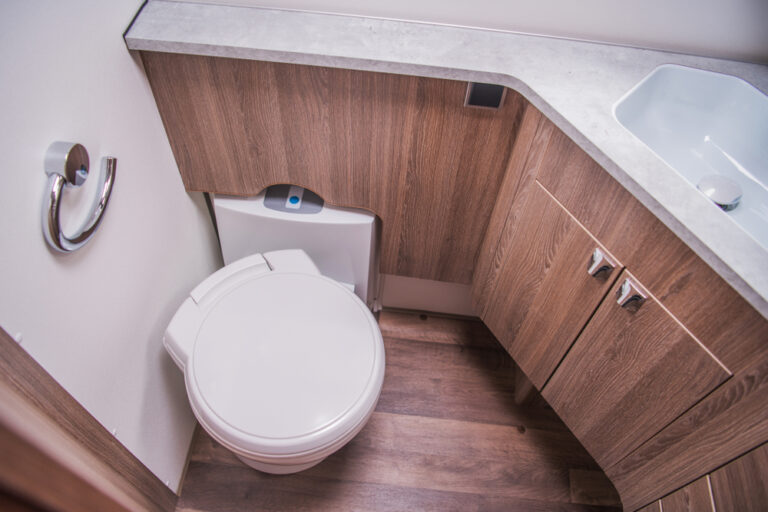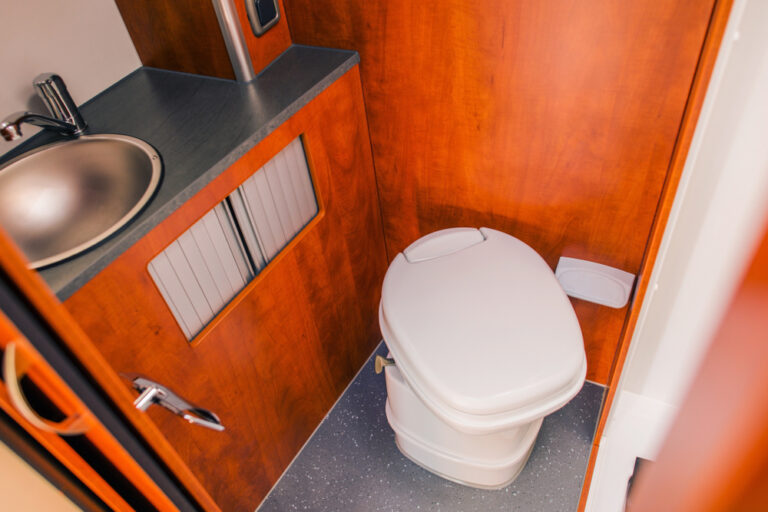
There are few problems that an RV owner dreads more than an RV toilet leaking. RV toilets need special care and are different than your regular sticks and brick unit. So why is your RV toilet leaking and what can you do about it? This quick post will help guide you through the murky waters (pun intended) or RV toilet leaks.
First, look for any of these symptoms and determine exactly where the water is coming from.
Is the water dripping from the upper part of the toilet during the flush cycle?
Is the water leaking when the bowl is full?
Is the water only around the base of the toilet?
Once you determine where the RV toilet is leaking you can decide what to do.
Let’s say your RV toilet leak is coming from the upper part of the toilet usually during the flush cycle. This could mean that your float seal in the vacuum breaker is not working right. If the seal breaks it will not hold water the right way and will cause a leak. Some toilets need you to buy a kit and replace the float seal. Other models must be taken apart and cleaned. Check with your manufacturer to see which is the best option for your RV toilet.
Sometimes a toilet seal will dry out over time and develop a slow, gradual leak. To prevent this you can coat the seal with vaseline with rubber gloves. You can also choose to use a substance called Plumber Grease. Keeping the seal moist may solve your problems or it may just be a good preventative measure.
Now let’s pretend that the RV toilet leaking only happens when the bowl is full of water. The first thing you want to do is inspect the unit for cracks. A crack above the normal usage area will cause a leak and it can often happen after winterization. This happens with plastic toilets. If your toilet is porcelain it can still crack, but it doesn’t happen after winterizing.

The most common type of leak is the floor leak. Water will be coming from the base of the toilet usually after the flush is complete. Sometimes, it will leak without a flush cycle. If this is the case, you may need to replace the flange. The flange is the piece of wax or plastic that goes under the toilet and connects to the floor. To replace the flange you must pull the toilet. Be sure to talk to a professional before attempting to remove an RV leaking toilet. Get all the facts and the parts up front. It will make the process a whole lot easier.
It is possible that a leak can be coming from the water connection at the back of the toilet. Check to make sure the connection of the water inlet valve is tight.
There comes a time when a new RV toilet is essential. Choosing a toilet can be a complex process. Be sure to read my other article on the replacing your RV toilet for a step by step guide.
Here are a few quick tips to help you pick a new toilet.
You need to know the following to find the right toilet for your rig:
1. Does your current RV toilet use air to flush?
2. Does your current RV toilet use power to flush?
3. Is your current RV toilet made of plastic or porcelain?
4. How big is the waste hole?
5. Do you want a residential or camping style toilet?
Each of these questions will help you determine the right toilet for your rig. Some RV’s have toilets that are easy to replace. (Usually trailers and campers) Class A Motorhomes can be more tricky. Bus conversions can be a lot more complex. (Think Marine toilet)
Regardless of what you decide, I hope this article helped you determine what is making your RV toilet leak. If your RV toilet is leaking for a long period of time it can damage your floor. Don’t wait! Start working on the project now. There are many helpful RV forums with other full timers and campers eager to assist you in the process.
You can do it!
